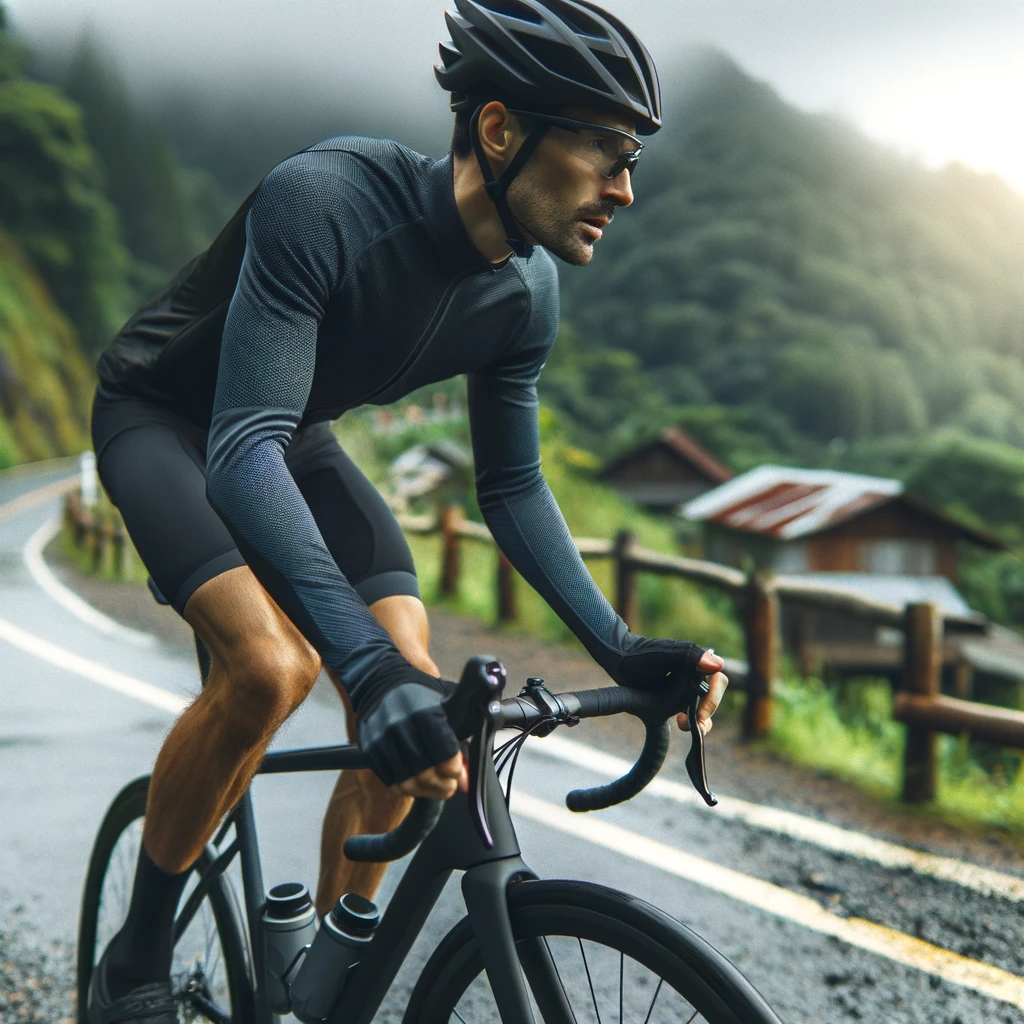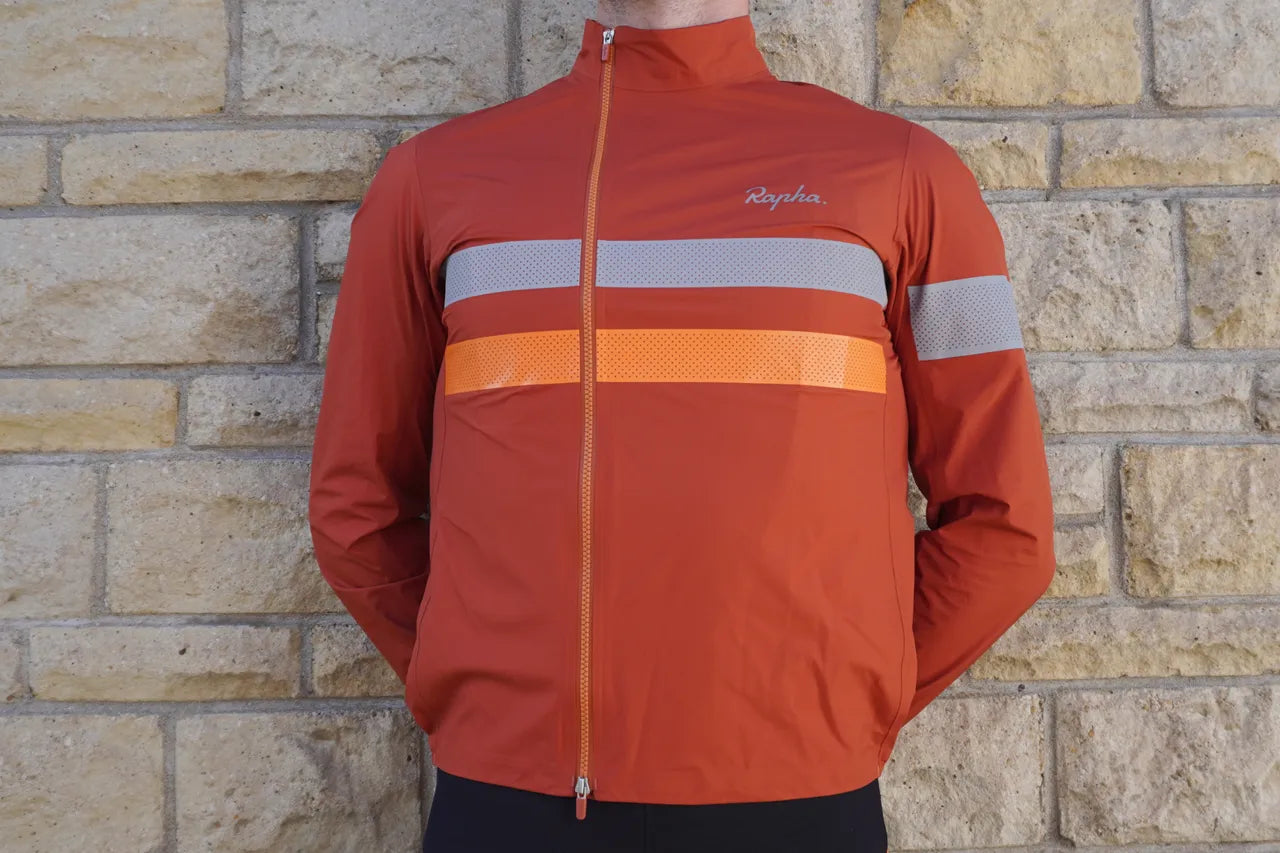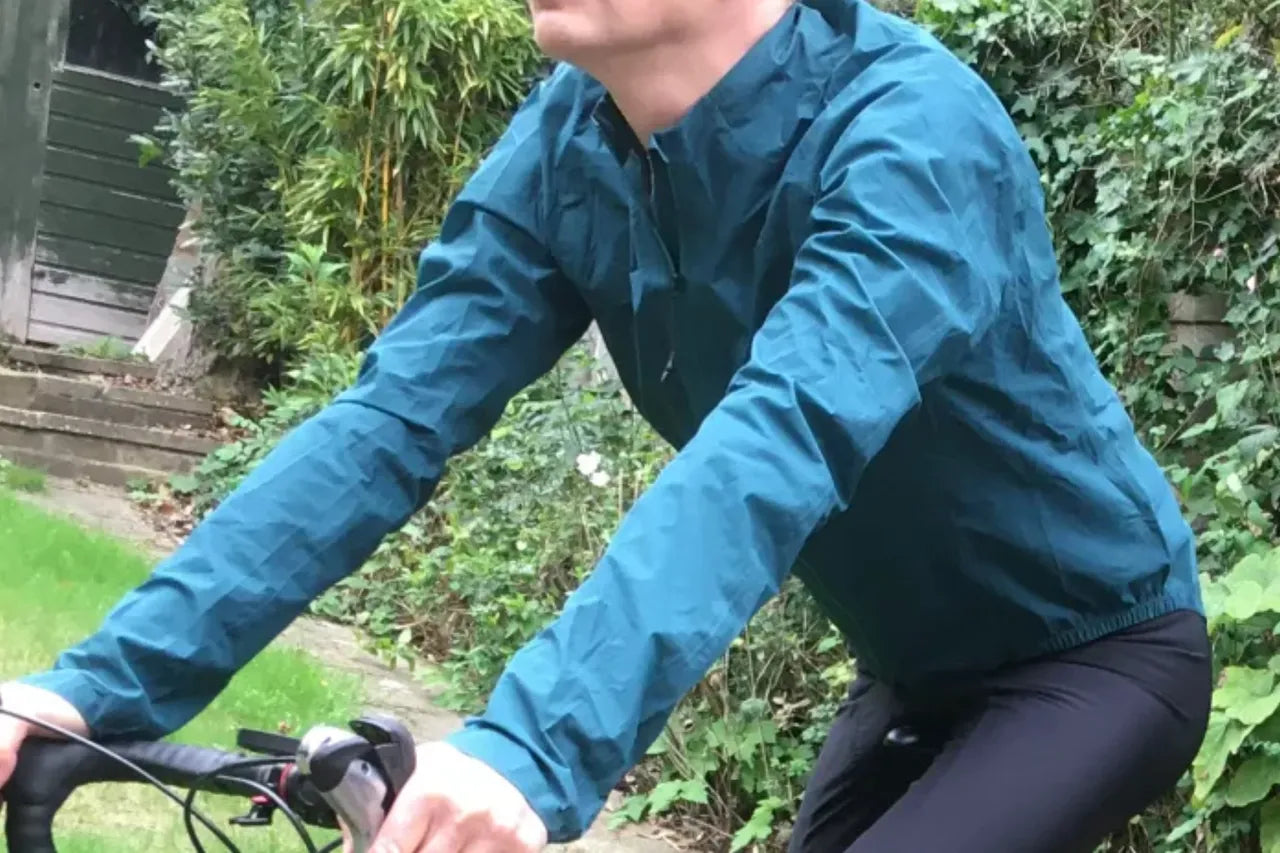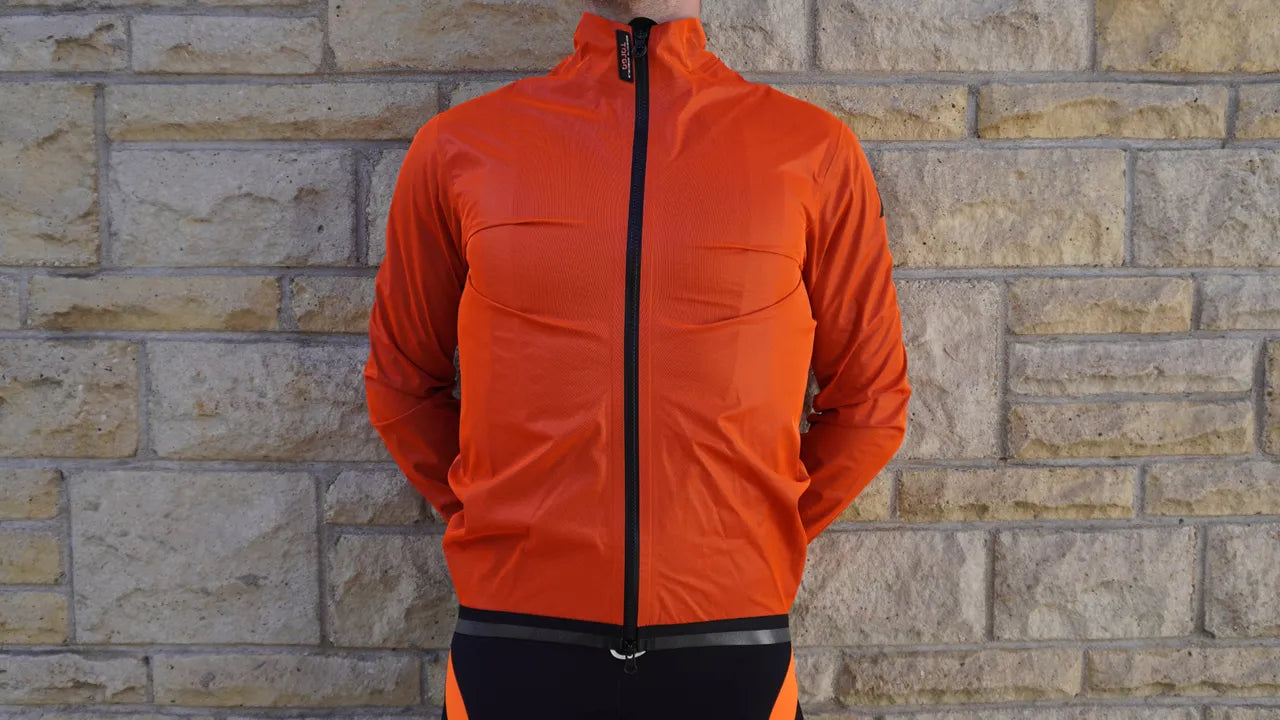Bicycle Jackets: How To Choose Right One
A waterproof bicycle jackets is a crucial part of a commuter cyclist's gear. It's your best defense against rain and chilly weather. Here's what to consider when purchasing one..
Why its necessary to have good bike jacket
Having a good bicycle jacket is essential for several reasons, particularly if you're cycling in varying weather conditions or taking longer rides. Here are the key reasons why a quality bicycle jacket is a necessary piece of gear for cyclists:
1. Protection from the Elements
- Weather Resistance: A good bicycle jacket offers protection against wind, rain, and even snow, keeping you comfortable and dry. Materials like Gore-Tex provide excellent waterproofing while still being breathable.
- Temperature Regulation: The right bicycle jacket helps maintain body temperature by providing insulation in cold weather and breathable options for warmer conditions.
2. Safety and Visibility
- High Visibility: Many bicycle jackets come in bright colors and feature reflective materials that enhance your visibility to motorists, other cyclists, and pedestrians, crucial for early morning rides, late evening outings, or any low-light conditions.
- Protection in a Crash: While not as robust as motorcycle gear, a good bicycle jacket can offer some protection against scrapes and abrasions if you fall.
3. Comfort and Performance
- Moisture Management: Quality bicycle jackets are designed to wick sweat away from your body, keeping you dry and comfortable during intense rides.
- Fit and Mobility: Cycling-specific jackets are designed to fit well while in a riding position, offering freedom of movement without flapping excessively in the wind, which can be both annoying and a drag on your speed.
4. Convenience and Utility
- Pockets: They often have well-placed pockets that allow you to carry essentials like your phone, keys, wallet, and even small tools or snacks, minimizing the need for a bulky backpack.
- Packability: Many bike jackets can be easily packed down small enough to fit in a jersey pocket or saddlebag, making them convenient to carry on rides where the weather might change.
5. Durability
- Quality Materials: Good jackets are made from durable materials that withstand the wear and tear of cycling, including exposure to UV light, repeated washings, and brushing against vegetation or rough surfaces.
- Longevity: Investing in a high-quality jacket means it will last longer, making it more cost-effective over time compared to replacing cheaper, less durable options.
6. Versatility
- Many cycling jackets are versatile enough to be used for other outdoor activities, such as running, hiking, or any situation where you might need protection from the weather, making them a valuable addition to your outdoor gear.
In summary, a good bike jacket is an investment in your comfort, performance, and safety on the bike. It not only makes riding more enjoyable in less-than-ideal conditions but also contributes to your visibility and protection on the road or trail.
Types of Bike Jackets
Waterproof vs. Showerproof Bicycle Jackets
Look for jackets labeled as "waterproof," not just "showerproof." Showerproof jackets can handle only light, brief rain, whereas waterproof ones can withstand sustained downpours.
Waterproof ratings, like 5,000mm or 10,000mm, refer to the fabric's hydrostatic head measurement, indicating the pressure of water it can resist before leaking. Higher numbers mean better waterproofing. Ratings below 1,500mm are only showerproof. A rating of 5,000mm suits persistent light rain, and 10,000mm or more is suited for heavy rain.
Rain can seep through seams and zips. Look for sealed or taped seams and zips with storm flaps or waterproof designs.

Wind and Cold Protection of Winter Bicycle Jackets
A waterproof jacket naturally offers windproofing, crucial for warmth while cycling.
Cyclists produce significant body heat, reducing the need for heavy insulation.
Cycling jackets feature design adjustments for cycling posture: longer arms and backs to cover wrists and lower back, and snugger neck cuts to prevent air scooping. Hems, collars, and cuffs should be tight to the body, often achieved with shock-cords, elastic, or Velcro.
Specific Design for Cyclists
Aside from standard coats, which may be too bulky for cycling (but suitable for e-bikers or casual riders), another alternative is a rain cape or poncho. These work more like umbrellas but may not suit all cyclists.
If you opt for a cycling-specific jacket, these design features will be tailored to your needs as a cyclist, ensuring comfort and protection during your ride.
Breathability in Cycling Jackets
Cycling jackets feature breathability to prevent overheating and excessive sweating during rides. The fabric has tiny pores that allow sweat vapor to escape without letting in rain. Breathability is also measured on a scale (like 5,000, 10,000, etc.), indicating the amount of water vapor (in grams) that can pass through the fabric in a 24-hour period. Generally, the higher the number, the better the breathability. This is particularly important for more intense riders, such as road cyclists, compared to e-bike riders.
However, it's possible to sweat more rapidly than the jacket can ventilate, especially during intense exertion, warm and wet conditions, or when carrying a backpack. Many cycling jackets incorporate underarm and back vents, often with zippers for adjustable airflow. If overheating, you can partially unzip the jacket for additional cooling. For intense riding or rain cessation, you might consider removing the jacket and storing it.

Design and Fit of Cycling Jackets
Cycling jackets are designed with a closer fit than typical high-street jackets. They range from casual fits, suitable over regular clothes, to snug, race-oriented styles meant for cycling gear. Commuter jackets often have a more relaxed fit, while performance jackets are better for longer, faster rides. Fit can vary between brands, so it's advisable to try on different styles.
Features like a full front zip make the jackets easy to put on and remove, even when wearing a helmet or glasses. For cold weather, look for jackets with zip mechanisms operable with gloves.
Hoods on cycling jackets are mostly for off-bike use. Some are designed to fit under or over a helmet but ensure they don’t obstruct peripheral vision. Hoods should be detachable or stowable to avoid flapping during rides. Jackets also have a high neck and extended arms and back, with some featuring a dropped tail for extra protection on bikes without mudguards.
Visibility Considerations
Bright colors like yellow, red, orange, lime green, and light blue are ideal for daytime visibility in urban settings. For nighttime, reflective elements are crucial. While some jackets incorporate LED lighting, these shouldn’t replace legal bike lights. Reflective jackets are most effective in the headlights of oncoming traffic.
Pockets and Storage
Useful features include a chest pocket for small items like a phone or keys and a large rear pocket for gloves, snacks, or a lock. Some jackets can fold into their rear pocket. Hand pockets are convenient off the bike but less so during rides. Ensure any pockets used while cycling have zips to secure contents.
Machine Washing
Most waterproof cycling jackets can be safely machine washed at temperatures of 30 or 40 degrees, but always refer to the garment's label for specific instructions.
Due to increased sweating in these jackets, they require more frequent washing compared to regular coats. If you notice any lingering odors, it’s time for a wash.
Avoid using fabric softeners, as they can clog the breathable pores of the fabric and reduce its effectiveness.
To maintain or refresh the jacket’s durable water-repellent (DWR) coating, which helps water to bead and roll off instead of soaking in, use specialized wash-in products like Nikwax TX Direct or Granger’s 2-in-1 during the wash cycle.
Best Brands of Bike Jackets

1. Rapha Brevet Gore-Tex Rain Jacket
Specifications
= Weight: 150g (small)
= Sizes: XS - XXL
Pros
+Easily packable
+Incredibly waterproof
+Impressively lightweight
Cons
-Not quite as easy to pack as a stuff sack
-Quite pricey
-Offset zip takes getting used to
The Rapha Brevet Gore-Tex Rain Jacket features what Rapha describes as a 'classic fit'. This slightly looser style is ideal for winter layering or more relaxed rides in unpredictable summer weather. However, if you're looking for a rain jacket with a more form-fitting, 'second-skin' style, this might not be the jacket for you.
For those who prefer a bit of extra space, Rapha's design strikes a good balance. The jacket avoids excessive material, minimizing wind flapping. The use of Gore-Tex’s 2L Paclite Plus fabric ensures reliable waterproofing.
There are a few minor issues, though. The offset zipper can be somewhat bothersome, and the pink retention band for packing the jacket isn't as practical as a standard integrated stuff-sack. Nonetheless, the jacket's breathability is impressive, making it a strong competitor to higher-priced models from other brands.
When compared to the Assos Equipe RS Rain Jacket Targa ($400 / £290), the Rapha jacket doesn't seem quite as durable, although the Assos model is notably exceptional in balancing packability with a sturdy feel. A long-term test would be necessary to accurately assess the durability of both jackets. So far, neither has shown any signs of premature wear.

2. DHB Lab Aeron Ultralight Waterproof Jacket 2.0
Specifications
= Weight: 153g (medium)
= Sizes: XS - XXL
Pros
+Very light and small when rolled up
+Great cut when riding
+Good cuff design
+Brushed collar
+Very breathable
Cons
-Feels tight across chest when standing (not riding)
-More water resistant than waterproof
While wearing the jacket, we noticed it feels snug across the chest at first, but it adjusts comfortably once you start riding. It features two vent flaps for easy access to jersey pockets. The jacket comes in an attractive Atlantic Deep color, with a Sulphur Spring variant available for increased visibility.
Although it doesn't match the waterproofing level of some other jackets in continuous rain, allowing slight dampness through the front shoulders and arms, its high breathability ensures it dries quickly. This makes it a great option for days when the weather is unpredictable.
3. Assos Equipe RS Rain Jacket
Specifications
= Weight: 290g
= Sizes: XS - XL, XLG, TIR
Pros
+Great waterproofing
+Very breathable
+Great fit
+Manages to make hi-viz chic
+Easily packable
Cons
-Cuffs let in water




